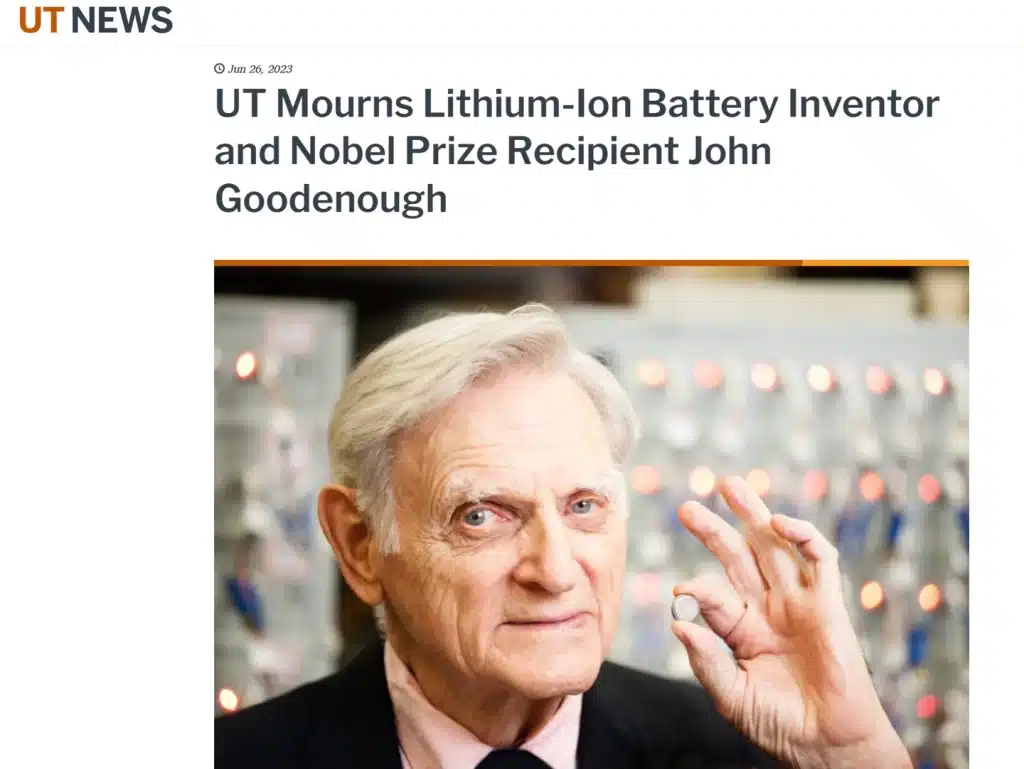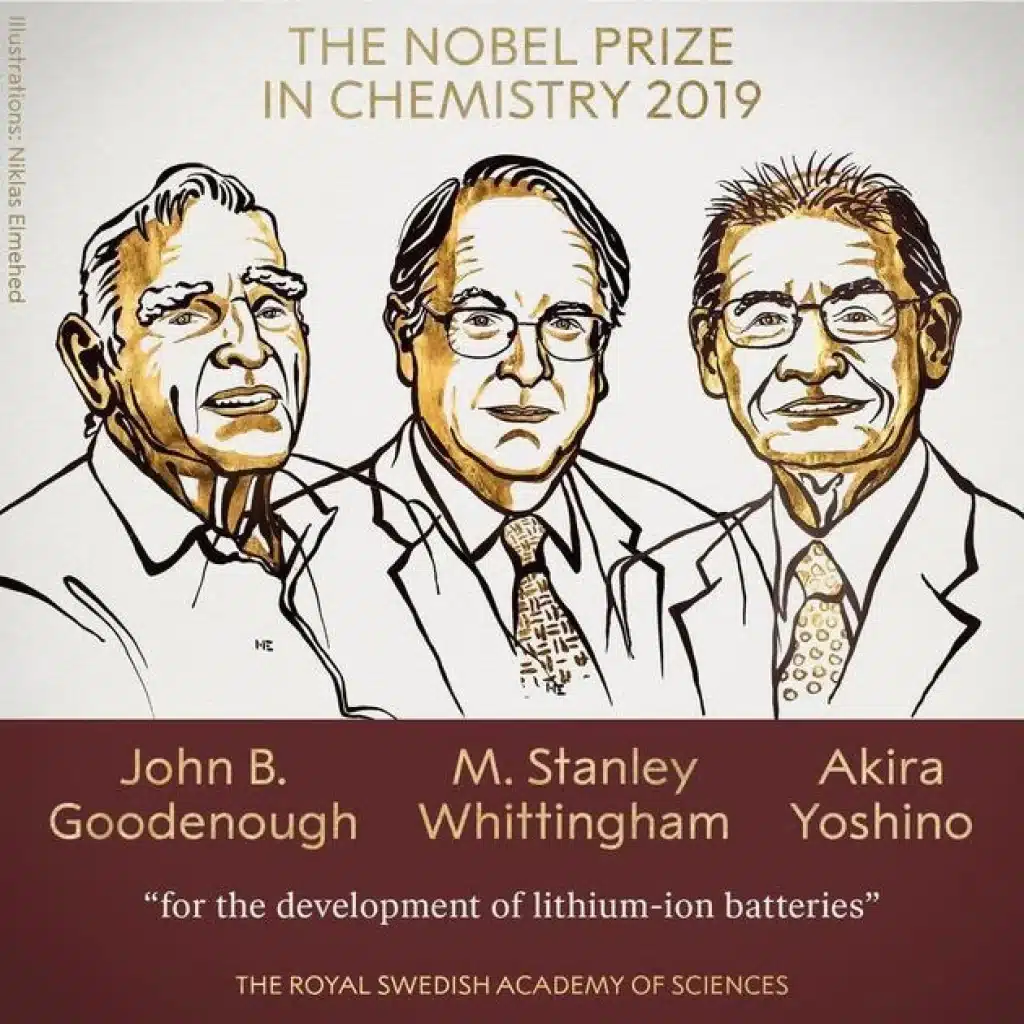On June 26th, Gizcoupon reported that it was reported that John Bannister Goodenough, a Nobel laureate, passed away. He was just one month away from his 101st birthday.
John Bannister Goodenough, an American solid-state physicist, was a prominent scholar in the field of secondary batteries. Additionally, he served as a professor of mechanical engineering and materials science at the University of Texas at Austin.
It is reported that John Bannister Goodenough was a pioneer in the development of lithium-ion batteries. His advancements in technology now power millions of electric vehicles worldwide.
Early Life and Academic Journey of John Bannister Goodenough
Goodenough was born in Germany in 1922 and later grew up in the northeastern United States, attending Groton School in Massachusetts. In 1944, he obtained a Bachelor’s degree in mathematics from Yale University. After serving as a meteorologist in the United States Army, Goodenough returned to the University of Chicago in 1952 to complete his Master’s and Ph.D. degrees in physics. At the University of Chicago, he studied under Nobel laureates Enrico Fermi and John A. Simpson, both of whom were involved in the Manhattan Project. His Ph.D. advisor was the renowned physicist Clarence Zener.
The University of Texas at Austin stated that Goodenough identified and developed crucial positive electrode materials. These materials provide power for electronic devices such as cell phones, laptops, tablets, and electric and hybrid vehicles. In 1979, he and his research team discovered that using lithium cobalt oxide as the cathode of a rechargeable lithium-ion battery allowed for high-density energy storage without relying on metallic lithium as the anode. This discovery led to the development of carbon-based materials, enabling stable and manageable negative electrodes in lithium-ion batteries.
Gizcoupon noted that Goodenough became the oldest Nobel laureate at the time of his award, at the age of 97, surpassing Arthur Ashkin’s record (96 years old). During the award ceremony, the Royal Swedish Academy of Sciences stated, “This rechargeable battery laid the foundation for wireless electronic devices such as cell phones and laptops. It also made a fossil fuel-free world possible. Furthermore, its applications are wide-ranging, from powering electric vehicles to storing renewable energy.”
In 1980, Goodenough collaborated with Japanese scholar Koichi Mizushima and others at the University of Oxford to discover lithium cobalt oxide (LiCoO2) as a cathode material for lithium-ion batteries.
Advancement in Positive Electrode Materials: Manganese Spinel
In 1983, Goodenough, along with M. Thackeray and others, discovered that manganese spinel is an excellent positive electrode material. Manganese spinel possesses advantages such as affordability, stability, excellent electrical conductivity, and lithium-ion diffusion. It has a high decomposition temperature and significantly lower oxidation potential compared to lithium cobalt oxide. This material can even prevent combustion and explosion risks in the event of a short circuit or overcharging. Although pure manganese spinel weakens with charge-discharge cycling, this issue can be overcome through chemical modifications of the material.
In 1989, Goodenough and A. Manthiram found that using a polymeric electrolyte, such as sulfate, as the positive electrode would result in higher voltages. This was due to the electromagnetic induction effect of the polymeric electrolyte.
In 2014, the National Academy of Engineering recognized Goodenough, Yoshio Nishi, Rachid Yazami, and Akira Yoshino for their pioneering and leading foundational work in modern lithium-ion batteries.


